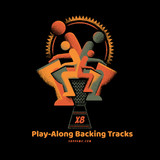The Cajon and Afro-Peruvian Instruments
In the 16th century African slaves were brought to Peru, which was under Spanish control at the time. African traditions were discouraged, as Peruvians did not want uprisings amongst the slaves. Over the years, as these two groups began to blend together, Africans adopted some Peruvian styles of music and dance, and Afro-Peruvian music and dance were born.
In order to maintain dominance, the Peruvians did not allow the Africans to play tribal instruments, as their instruments have long been used for communication and culturally significant ceremonies. Faced with a lack of access to instruments, many people created their own instruments. These instruments evolved from everyday items such as table tops, spoons, boxes, and chairs into some familiar instruments we use today.
The cajon drum was invented from such home-made instruments. The cajon is a hard-wood box with a plywood cover. It is played by sitting upon the instrument and striking it in different places with the hand. This is similar to traditional drum playing methods in which striking different parts of the instrument produces different sounds and tones, but the construction of the cajon allows for a different sound that is a hallmark of Afro-Peruvian music. Cajons are frequently used in flamenco music and dance, and have become a part of modern culture.
Another Afro-Peruvian instrument created from simple household items is the cajita. The cajita is a small box that struck with a stick and alternately opening and closing the top. This produces a multitude of rhythmic sounds and is a fun instrument to master.
A quijada is another instrument that stems from this time period. It is, however, made from a more atypical material. The quijada is made of a donkey’s jaw, and has evolved into what we know today as the vibraslap. It is played by hitting the wide part of the jaw with a closed fist to produce a rattling sound. The quijada may also be played by dragging a stick across the teeth, similar to a guiro.
Afro-Peruvian music also integrated sounds that could be made with the body such as clapping and stomping, and has used the cultural ties to both Africa and Peru to create a vibrant genre of music that is enjoyed the world over. This music that came from depressed times has now become a celebrated art form. It is a lively form of music to be shared and celebrated.
Recent Posts
-
X8 Drums Play-Along Backing Tracks
The new X8 Play-Along Series is being produced for our musician friends wanting a fresh way to work …9th Feb 2025 -
What is the Best Size Djembe for Beginners?
If you're new to the world of percussion and interested in learning the djembe, you're in for a t …16th Jul 2024 -
The Benefits of Becoming a Drumming Teacher: Transforming Passion into Profession
Why become a drumming teacher? Becoming a drumming teacher is an excellent way to share your pas …22nd May 2024



